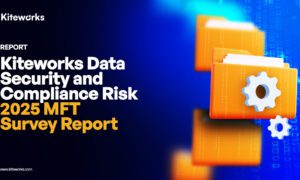In the contemporary era of advanced technology, cybersecurity has assumed greater significance than at any previous point in history. As the number of cyber threats and malicious attacks continues to rise, safeguarding your digital life has become paramount. This guide delves into five effective strategies aimed at protecting you from these online hazards while ensuring the security of your valuable data.
-
Empower Yourself and Your Team with Knowledge:
The initial step in defending against cyber threats involves enhancing your knowledge and that of your team. Staying well-informed about the latest developments in the field of cybersecurity is of utmost significance. Cultivate a habit of regularly reading credible sources of cybersecurity news and subscribing to security updates.
Furthermore, organizing cybersecurity awareness training sessions for your employees is essential. Educate them on creating robust passwords, identifying phishing attempts, and fostering safe internet browsing habits. By nurturing a culture of awareness and continuous learning, you significantly diminish the likelihood of falling victim to cyberattacks, fortifying your organization’s digital defenses.
Trust is of the utmost importance when it comes to ensuring the security of your digital assets and sensitive data. This is precisely why many companies, such as 7tech Cybersecurity Company distinguish themselves as dependable Managed Security Service Providers (MSSP) renowned for their proficiency in bolstering hybrid and cloud environments, all while avoiding the potentially hazardous path of third-party outsourcing.
-
Implement Robust Access Controls:
Effective management of who can access your digital assets is pivotal for ensuring the security of your data and systems. To achieve this, enforce strict user access permissions, allowing individuals access only to the data and systems that directly pertain to their job responsibilities. Adhering to the principle of least privilege is key, limiting access to the bare minimum required to minimize potential points of vulnerability.
Moreover, contemplate the implementation of multi-factor authentication (MFA) for vital systems and accounts. Multi-factor authentication (MFA necessitates users to supply multiple forms of verification, like a password and a fingerprint, thereby introducing an additional layer of security to fortify the protection of your digital assets.
-
Keep Software and Systems Up-to-Date:
Obsolete software and operating systems pose attractive targets for cybercriminals, primarily because they come with well-documented vulnerabilities. To safeguard against these potential threats, it’s crucial to develop a routine of regularly updating your software and operating systems. Whenever possible, enable automatic updates and promptly apply patches to known vulnerabilities.
Consider bolstering your defenses by implementing vulnerability scanning tools, which can proactively identify and address potential weaknesses. By ensuring that your digital tools are consistently up-to-date, you effectively close off many of the entry points that cybercriminals commonly exploit to gain unauthorized access to your systems, enhancing your overall cybersecurity posture.
-
Utilize Reliable Antivirus and Anti-Malware Solutions:
Allocating resources to acquire trustworthy antivirus and anti-malware software represents a crucial element within your overall cybersecurity strategy. Conducting thorough research is essential to carefully choose software that precisely matches your specific needs and requirements. Prioritize solutions that provide real-time protection and regular threat scanning.
Keeping the software’s virus definitions up to date is critical; enabling automatic updates ensures that your antivirus software can promptly detect and neutralize the latest threats, significantly enhancing the security of your digital assets. This proactive approach shields your systems and data from evolving cyber risks and fortifies your overall cybersecurity posture.
-
Regularly Back Up Your Data:
In the eventuality of a cyberattack or data loss, reliable backups act as your safety cushion. Implement a robust data backup strategy, opting for secure backup solutions like cloud storage or external drives. Set up a regular backup routine to guarantee uninterrupted data protection. Equally significant is verifying your data restoration procedures.
Confirm that you can successfully restore your data from backups, as this capability can be a lifesaver in the event of ransomware attacks or other data compromises. Adequate backups provide peace of mind and the ability to quickly recover from unforeseen digital disasters, minimizing disruptions to your operations.
Conclusion:
Protecting your digital existence against cyber threats and malware necessitates a proactive strategy. By staying informed, controlling access, updating software, using strong security tools, and backing up data, you can reduce the risk of falling victim to cyberattacks. Remember, cybersecurity requires ongoing commitment and vigilance for a safer digital environment. Take action now to protect yourself, your data, and your online presence.



































